Posts Tagged: Tithonia
A Bright Face in the Garden: Banded Argiope
We have bright faces in our Vacaville, Calif., pollinator garden. The bright faces are usually that of assorted bees and butterflies nectaring on...
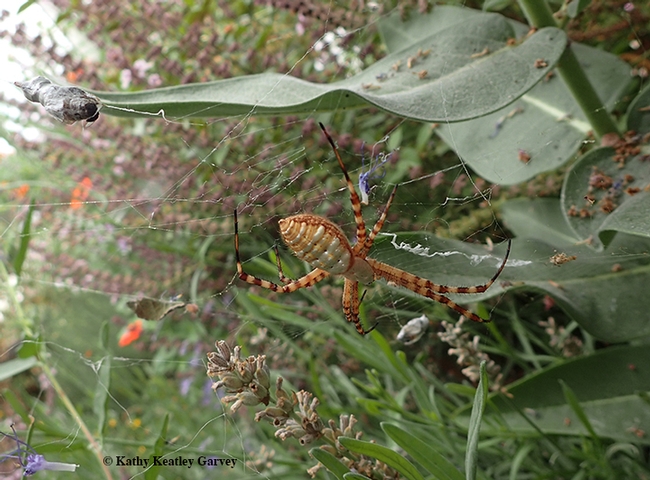
A banded garden spider, Argiope trifasciata, stretches out near its wrapped bee in a Vacaville, Calif. pollinator garden. (Photo by Kathy Keatley Garvey)
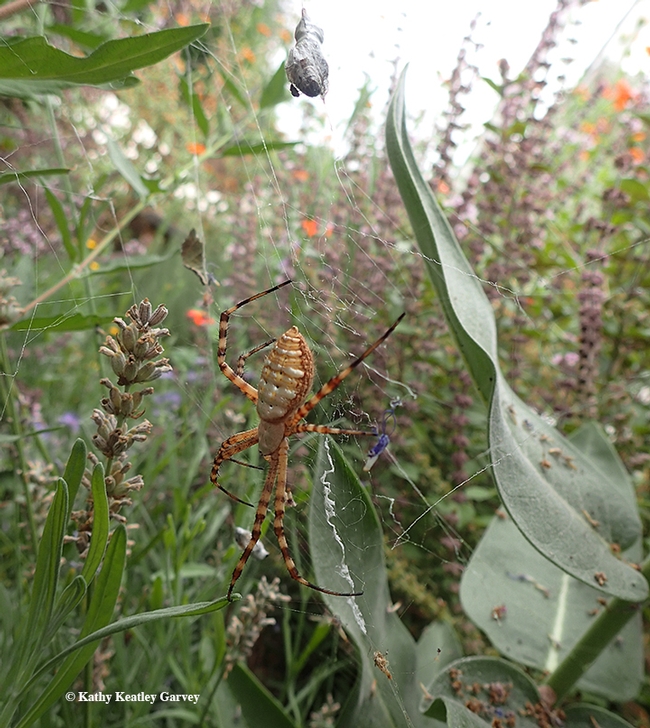
See the freeloader fly, family Milichiidae, feasting on the wrapped bee? Below it: the banded garden spider, Argiope trifasciata. (Photo by Kathy Keatley Garvey)
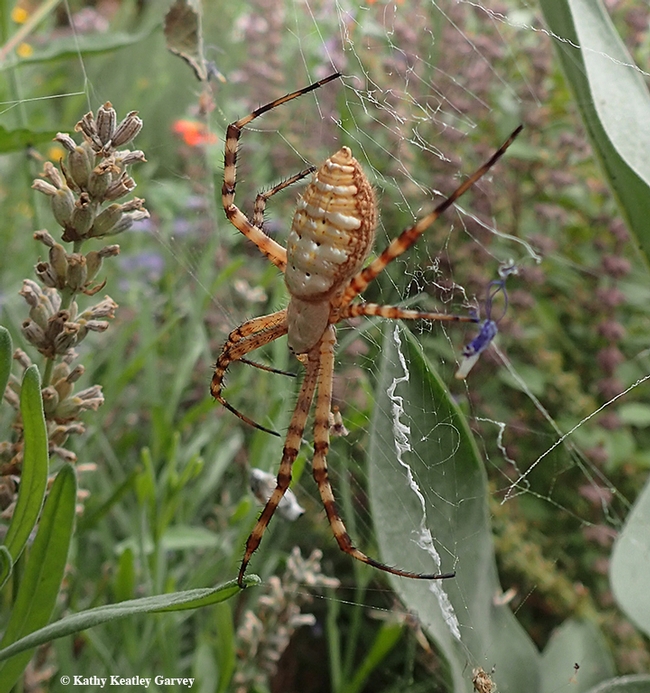
Close-up of the banded garden spider, Argiope trifasciata. Argiope is Latin for “with bright face” while trifasciata is Latin for “three-banded.” (Photo by Kathy Keatley Garvey)
How Do Insects, Spiders React to a Partial Solar Eclipse?
The sky darkens. The temperature drops several degrees. A breeze rustles the leaves of the African blue basil. Dogs bark. And off in the distance, a...
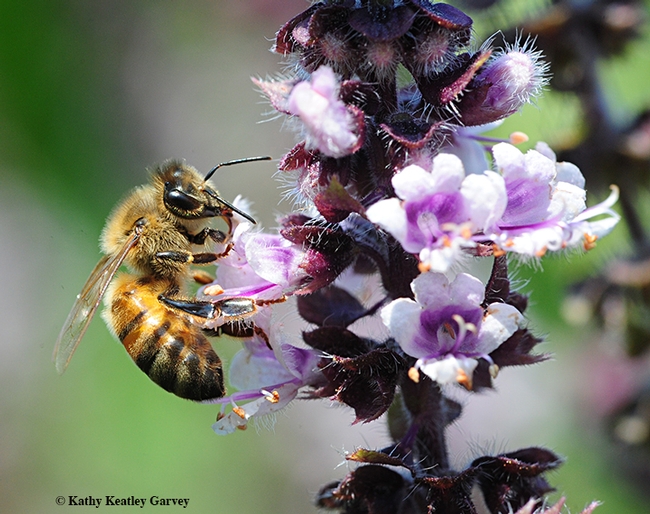
A honey bee nectaring on African blue basil during the partial solar eclipse in Vacaville, Calif. (Photo by Kathy Keatley Garvey)
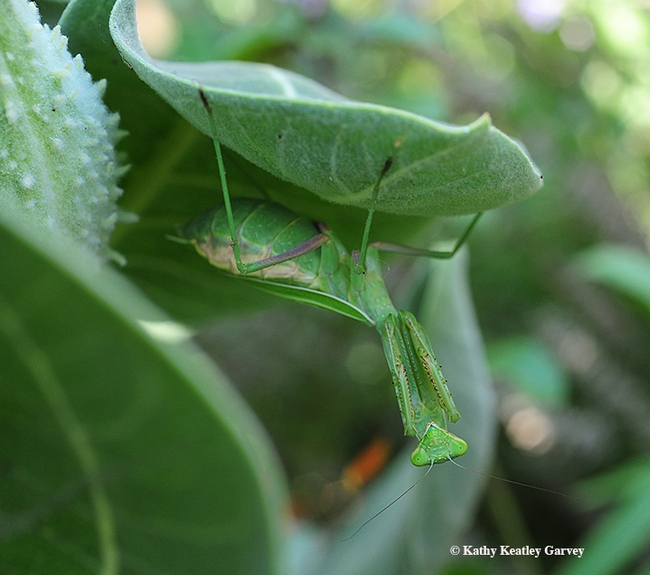
A praying mantis, a female Stagmomantis limbata (as identified by Andrew Pfeifer) lurks beneath a milkweed leaf during the partial eclipse in Vacaville, Calif. (Photo by Kathy Keatley Garvey)
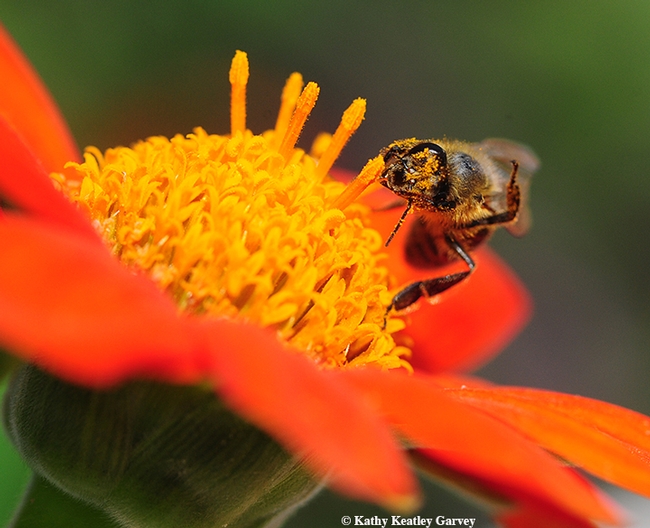
A pollen-coated honey bee ignores the eclipse and forages on a Mexican sunflower (Tithonia). (Photo by Kathy Keatley Garvey)
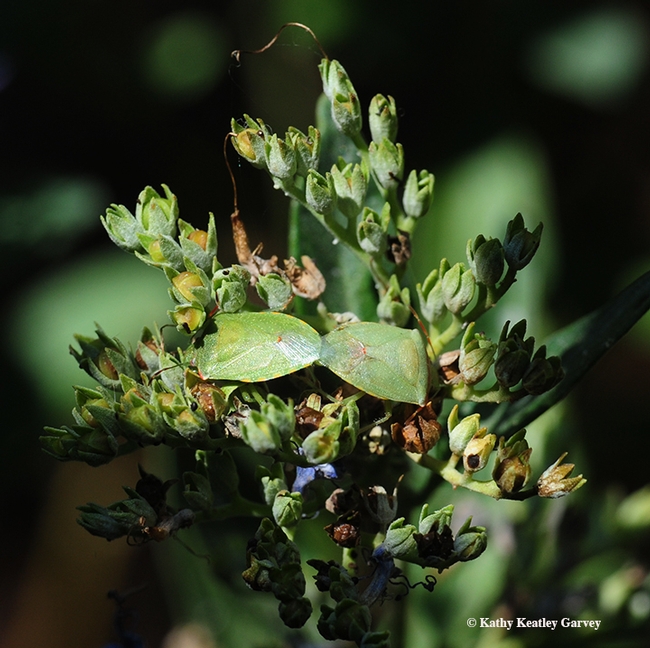
Two stink bugs on a bluebeard,Caryopteris x clandonensis. (Photo by Kathy Keatley Garvey)
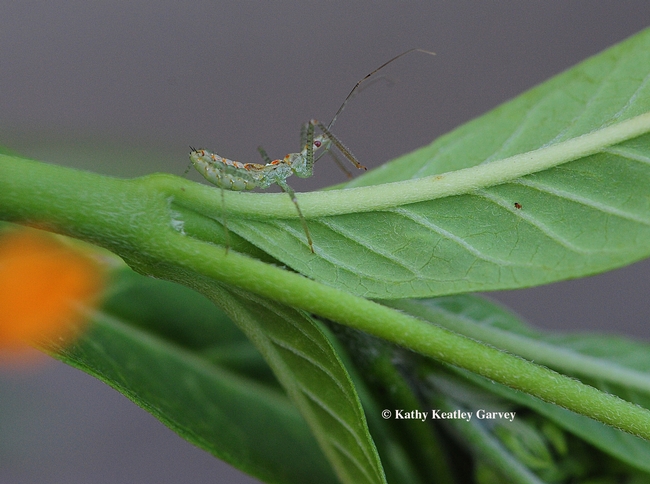
An assassin bug looking for prey. It's on a tropical milkweed. (Photo by Kathy Keatley Garvey)
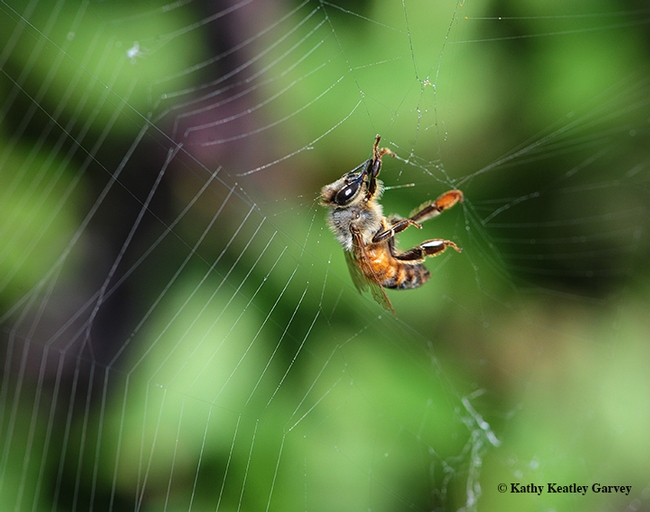
A honey bee trapped in a web (and freed by the photographer). It was the spider's second catch of the day. (Photo by Kathy Keatley Garvey)
A Tiger by the Tail
One of Buck Owens' signature songs that never failed to please his fan base was "I Got a Tiger by the Tail." The Country-Hall-of-Fame singer, who...
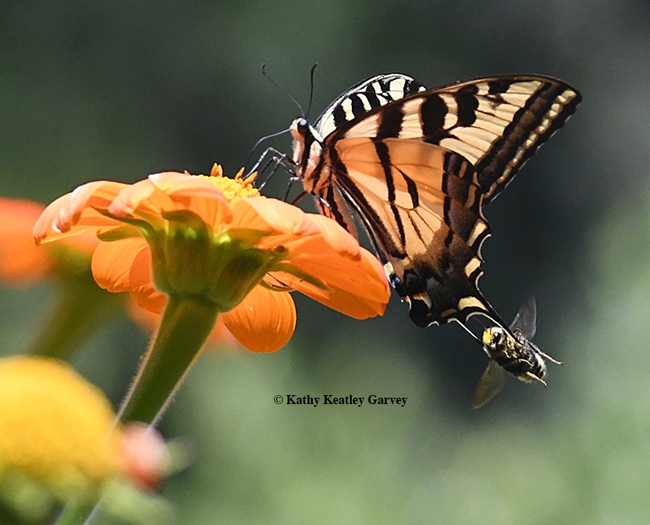
A longhorn bee, probably Melissodes agilis, has this "tiger" (Western tiger swallowtail) by the tail. (Photo by Kathy Keatley Garvey)
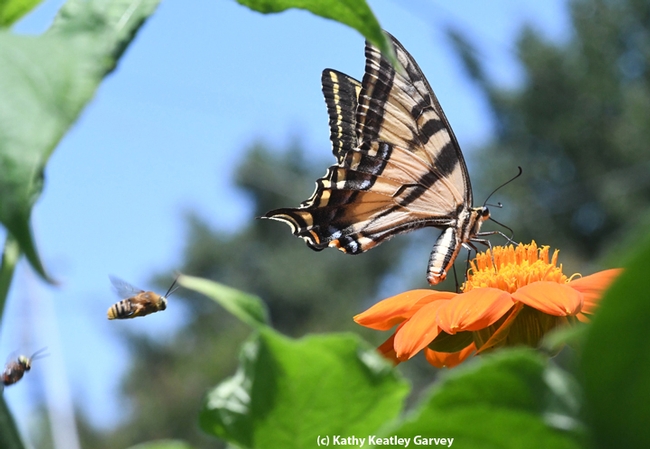
Territorial male longhorn bees are targeting a Western tiger swallowtail as it's trying to sip some nectar from a Mexican sunflower (Tithonia). (Photo by Kathy Keatley Garvey)
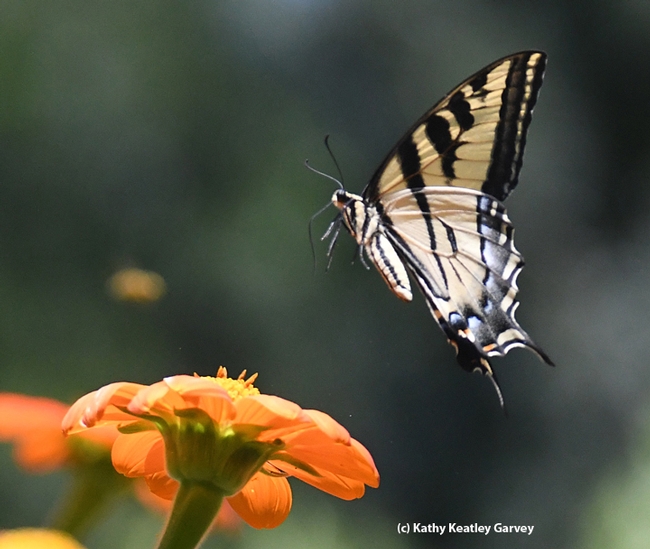
This Western tiger swallowtail, targeted by male longhorn bees, takes flight. (Photo by Kathy Keatley Garvey)
The Bee and the Tiger
Talk about a butterfly ballet... A large Western tiger swallowtail, Papilio rutulus, with a wingspan of about four inches, flutters into the...
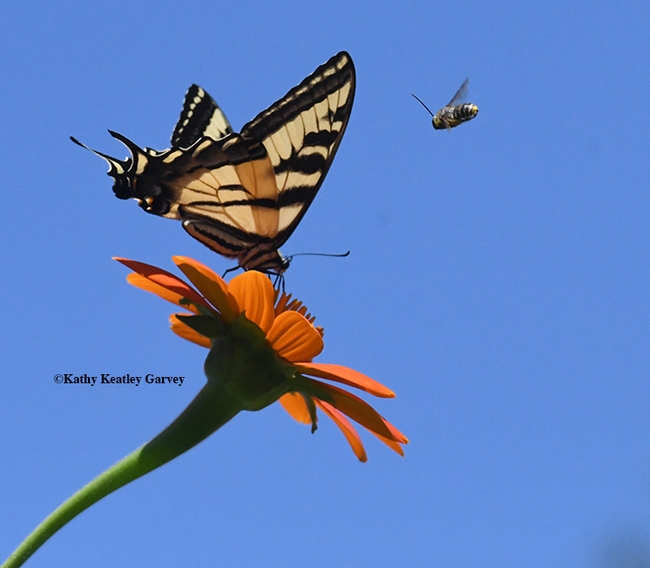
A male longhorn bee, probably a Melisoddes agilis, targets a Western tiger swallowtail nectaring on Tithonia in Vacavile, Calif. (Photo by Kathy Keatley Garvey)

Butterfly ballet--The startled Western tiger swallowtail takes flight. (Photo by Kathy Keatley Garvey)
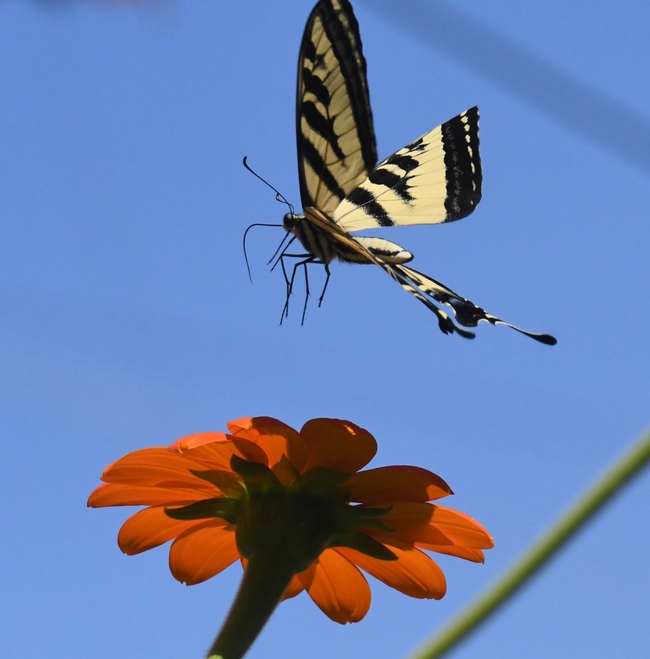
Western tiger swallowtail, interrupted by a male territorial longhorn bee, decides the Mexican sunflower is not "big enough for both of us." (Photo by Kathy Keatley Garvey)
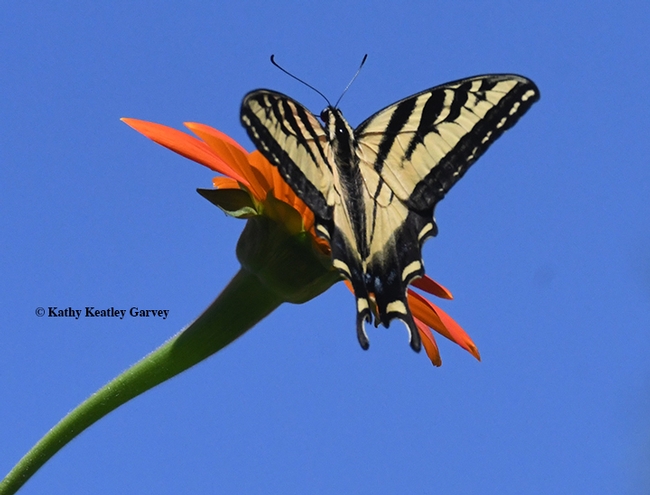
Persistent Western tiger swallowtail selects another blossom. (Photo by Kathy Keatley Garvey)
Not a Good Way to Welcome an Admiral
It was not a good way to welcome an admiral. The Red Admiral butterfly, that is. The Vanessa atalanta fluttered into our pollinator garden on...
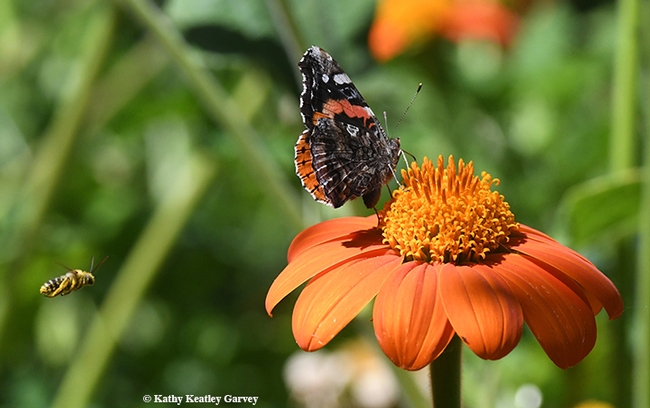
A territorial male long-horned bee, probably Melissodes agilis, targets a Red Admiral, Vanessa atalanta. (Photo by Kathy Keatley Garvey)
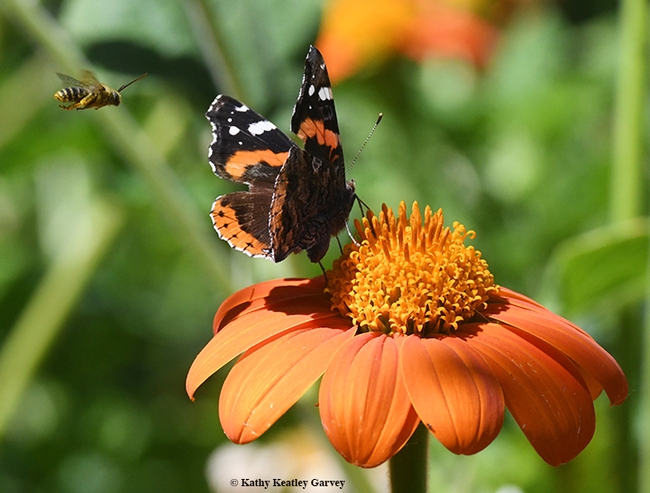
The long-horned bee makes a "bee line" for the butterfly, a Red Admiral. (Photo by Kathy Keatley Garvey)
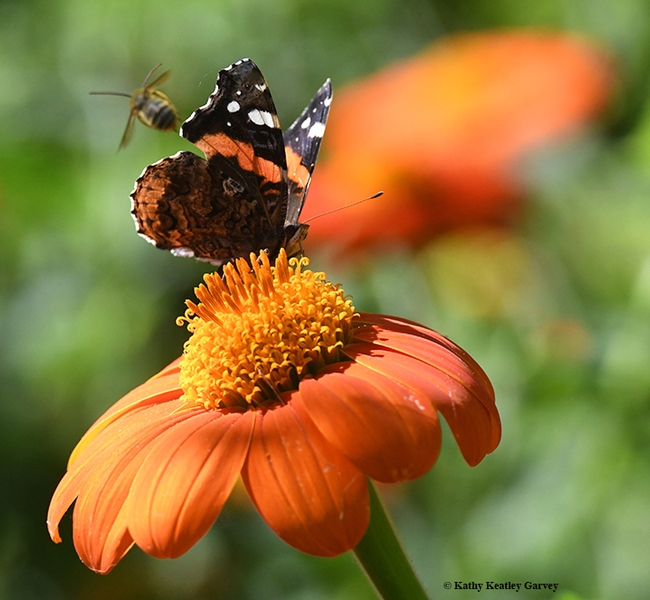
The bee slams into the butterfly and takes off for another round. (Photo by Kathy Keatley Garvey)

